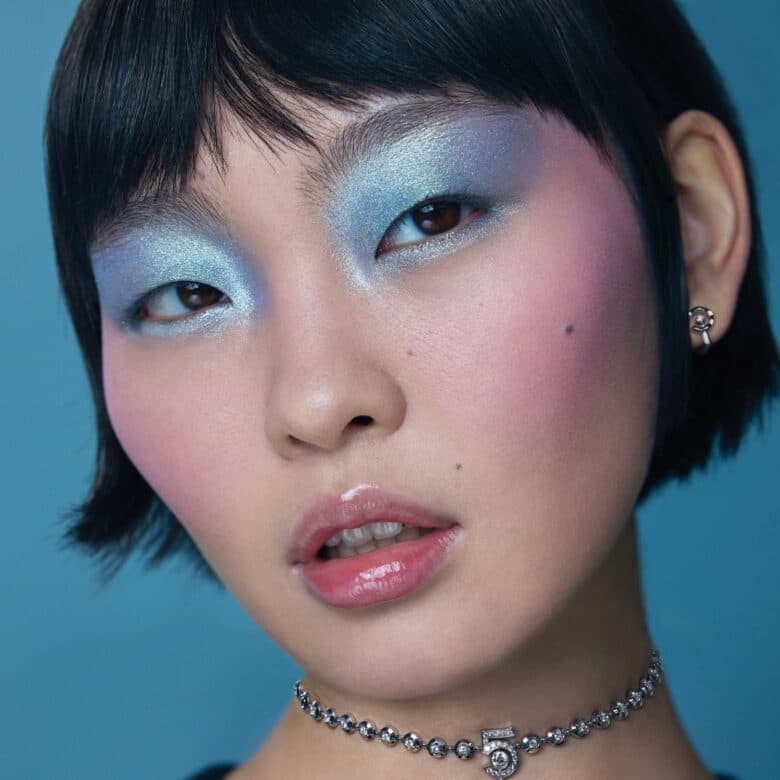Ashish on his AW25 collection inspired by the walk of shame

Walking into Ashish Gupta’s AW25 show, you could be forgiven for confusing 180 Strand with the aftermath of a particularly hectic London Fashion Week party. Deflating balloons and confetti are strewn about the runway — several get tangled in the attendees designer shoes — and the words ‘walk of shame’ and ‘thanks for cuming’ hang in inflatable letters on the walls. It’s the perfect decor for a show held at 9am on the concluding Monday morning of fashion week. The guests have got the memo, too. In homage to the London-based, Delhi’s born designer’s signature fabric, everyone looks slightly bleary-eyed in their sequinned garbs. Several wear sunglasses — whether a fashion statement or the remedy for a sore head, we’ll never know.
I sit down opposite Gemma Collins, who’s dressed in one of Ashish’s characteristically eccentric coats (it’s not hard to see why the GC is an Ashish fan), before the lights dim and models start parading onto the catwalk in pret-à-porter. The order of the day? Sparkling party wear, askew barnets, swaying, heel-laden walks and chewing gum in mouths. It’s a scene I remember all too well from my early twenties. But, for Ashish, that ‘walk of shame’ is more like a “stride of pride”. “Joy and humour is the way we survive,” the designer tells me after the show. Today, that’s as evident as it was at Ashish’s first LFW back in September 2005. From dresses to tailored two-pieces to briefs (the latter modelled to a backing track of Club 69’s Let Me Be Your Underwear), the garments are laden with bright colours and sequins of all shapes and sizes.


Yet, sparkly pants aside, there’s a hint of something more profound — though Ashish admittedly doesn’t want that aspect to be too “on the nose”. Dubbed Crisis of Confidence, the collection is about everything and nothing specific at the same time. It’s an ode to taking up space, and letting whatever you care about be seen, whoever you are. That’s reflected in the slogans seen on the runway (‘Slut for socialism’ being a personal favourite), as well as the selection of models, who span various ages and gender presentations. “It’s about being visible, like, I’m here,” Ashish says. The show’s finale speaks exactly to this sentiment — the models dance around the runway, their dead-pan catwalk expressions giving way to genuine smiles. Ashish appears for a moment to celebrate his latest achievement, before I catch him backstage for a brief chat.
Tell me about the inspiration behind the collection.
This is the thing — I sort of wanted it to be a bit of a metaphor. I didn’t want it to be in your face. I feel like it’s nice when people read into things and make their own kind of conclusions based on what’s going on in their head. It’s nicer when you say things and it’s, like, in a funny way or a sweet way, or a way that’s layered.


What about the ‘walk of shame’ theme specifically?
Framing the show as a walk of shame had massive meaning for me because you think it’s shameful, but actually it can be a stride of pride, you know. It can be really empowering.
What is it about the current climate that made you opt for that idea?
I mean, what isn’t it? Including the climate. It just really mind fucks me how everything that has been happening is continuing to happen and keeps happening, and is allowed to happen. It just feels like, in these times, you’ve got to find moments of sanity and joy and humour. And that, I think, is the way we survive.


How do your characteristic motifs of bright colours and sequins play into that?
Sequins in themselves are such a statement because, with sequins, you can’t be in the closet — they say, you know, here I am. It’s like being in a big city at night when it lights up. But then it’s also about the folky techniques. Everything is made by hand, so it’s like a push against more industrialisation. You know, the mass production of everything. I don’t understand why we need, like, 500, 000 of one thing. Ever. Why can’t things just be beautifully handmade and have imperfections?
So, what’s the creative process?
I just think, does that work? Do I like it? Does it make me happy? Is that something I feel like I want to do? I always treat every collection like the last collection because, you know, fashion.


- WriterScarlett Coughlan
- Image CreditsChris Yates / Chris Yates Media

